Young Surgeon’s Notes
The TSRA is delighted to launch its blog initiative, a place where trainees can seek advice from established surgeons and publish opinion articles that are salient to our experiences. Do you want to share what you learned from a difficult clinical encounter with the rest of your colleagues? Do you want to rally your colleagues to believe in a new idea in education or policy? This is the place for us to express these thoughts. As a bonus, we will also publish the inaugural presidential address this year, starting a new tradition for the TSRA leadership.
There are two content categories:
- Opinion article (500-600 words)
- Advice columns
Each column will send out a request for advice on a pertinent subject to various designated mentors for this initiative. Their replies, each ranging from 100-150 words, will be compiled and published to be shared with the entire TSRA community.
Summaries and links to articles published in the Young Surgeon’s Note section of the JTCVS New content will be disseminated on the website and via our newsletter. If you would like to submit an article or suggest a topic for an advice column, please reach out to jason.han@uphs.upenn.edu or blitzer.david@gmail.com.
June 2020
“In the setting of the pandemic, do you have any advice for students and residents applying this & next cycle?”
Shari L. Meyerson M.D.
Program Director of CT Surgery
University of Kentucky
This year is going to be a challenge for both applicants and programs. It will be crucial to use your application to demonstrate you understand what you are signing up for. That may be in the form of clinical experiences, 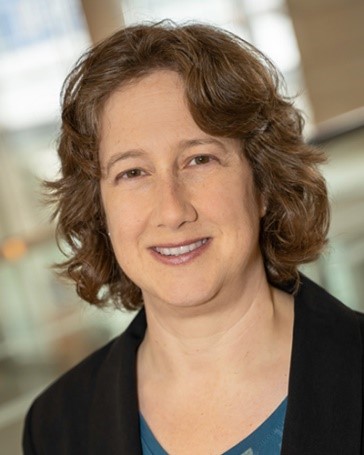 research, volunteer work or other strategies. If I can’t tell from your application why you want to specifically be a cardiothoracic surgeon, I am unlikely to interview you. Applications with 5 pages of one-time activities (ex. raising money for a single charity race) don’t excite me as much as applicants who have put their heart and soul into something that means a lot to them and committed to it over an extended period of time. Cardiothoracic surgery is a lifetime commitment and I want to be sure you know what that means.
research, volunteer work or other strategies. If I can’t tell from your application why you want to specifically be a cardiothoracic surgeon, I am unlikely to interview you. Applications with 5 pages of one-time activities (ex. raising money for a single charity race) don’t excite me as much as applicants who have put their heart and soul into something that means a lot to them and committed to it over an extended period of time. Cardiothoracic surgery is a lifetime commitment and I want to be sure you know what that means.
The challenge this year is identifying the right fit without ever visiting the program. Talk to alumni of your medical school in not only CT surgery but other surgical specialties about interview experiences and a sense of the local culture in advance. Many programs will have virtual meet and greet experiences with current residents. Actively engage the residents at those events watching both how they answer your questions but also how they interact with each other. Reach out to residents you meet at those events individually to get a further sense of the culture of the program after the “interview day.” Good luck to everyone and I look forward to meeting all of you.
A.J. Carpenter, MD, PhD
Professor and Program Director, Thoracic Surgery
UT Health San Antonio
So, you want to be a Cardiothoracic Surgeon and then COVID happened.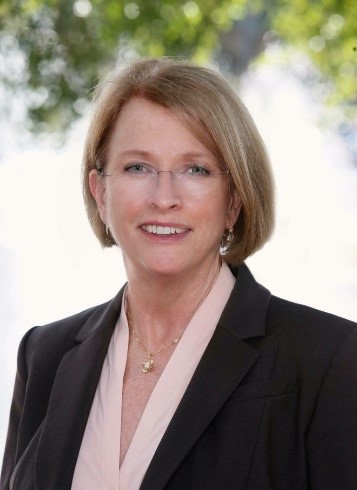
First: In the words of Douglas Adams, “Don’t Panic”. We are all in this together. Multiple sources have recommended all programs to review applications and interview applicants virtually. Of course, I can never guarantee that every program will abide by these recommendations, but this should make a level playing field.
Second: You are VERY adept with the virtual world so take full advantage. Start with the usual resources to identify programs that interest you. This includes AAMC ( https://students-residents.aamc.org/ ), TSDA (https://tsda.org/the-tsda/ct-residency-programs ), your local surgery faculty and medical school friends who preceded you in the match game. Search the websites of the programs that interest you.
Contact the Program Director (PD) by email with a brief summary of who you are and why you want to be a Cardiothoracic Surgeon. Don’t send the PD’s a dissertation, as they will see your entire application when you apply and they have too much email to read already. Concentrate on those programs whose PD responds to your inquiry.
Finally, keep your options open. Apply to general surgery in addition to integrated or 4/3 programs. As you work through the process you may decide that the traditional route (general surgery followed by thoracic fellowship) is the best choice for you.
Remember: Don’t panic. No matter how much pressure anyone puts on you, don’t panic.
Mike Jaklitsch, M.D.
Program Director of CT Surgery
Brigham and Women’s Hospital, Boston
Current policies recommend I-6 Cardiothoracic Residency interviews in the 2020-21 academic year be virtual and all programs close their electives to 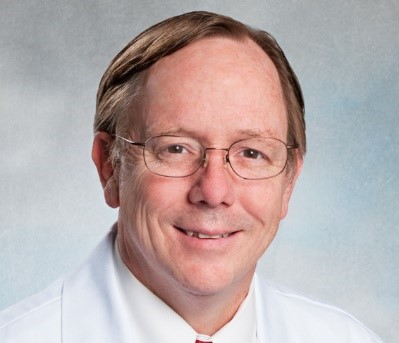 visiting medical students.
visiting medical students.
This poses a serious challenge. Applicants and programs are trying to find a match that will last 6 clinical years. We take one I-6 candidate in each track per year. Attrition or bad fit is very hurtful to both parties. We do not trust our abilities to determine the best candidate for our program from just applications and virtual interviews. What we are losing is an ability to see the human to human interaction that leads us to believe that we can coach this individual.
We are limited in resources to distinguish among I-6 applicants. Many medical schools are pass/fail, letters of recommendation are of limited value, and Step 1 is now pass/fail. There are multiple outstanding candidates each year. The live interview has become our most important tool in ranking. Interview day is a chance to perform a 3600 evaluation of the applicant. It’s not just a few minutes with the faculty, but interactions with the nurses, residents, security guard, valets, chaplain, etc. Every year, many of our residents were lifted higher in the rank list by the power of the live interview. Conversely, an initial favorable impression of the faculty has been wiped away by the insight of someone on our extended team that suggests the applicant may not be a “good fit.”
In all honesty, I do not know if we can get a 3600 view of the applicants through virtual interviews. I feel that we must reach out to more people at the home institution of those that interview favorably to try to get to know the cultural values of the applicant. Same for the applicants. Can they realize the value of a culturally diverse training program through the tablet screen? Our program is diverse with 22 ACGME fellows, of which 41% are female and 32% are considered minority.
It can also pose bias – students who apply to our program from our home institution or institutions where our faculty happen to have friends they trust may have an advantage.
So, what can we do? Recognize that it may be far from perfect, and unfair. Speak out if you feel you’re unable to make the impression you want to because we are here to listen.
Arnar Geirsson MD
Chief of the Division of Cardiac Surgery
Yale School of Medicine
The COVID pandemic has really thrown a wrench at the way we practice 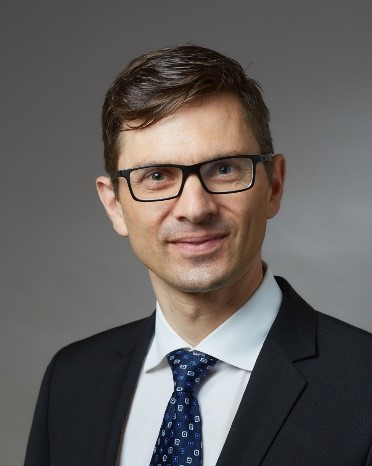 medicine as well as at surgical education. It is unclear how this will affect applicants to cardiothoracic training programs, both I-6 and traditional pathways. However, every crisis represents an opportunity and I suspect that we will develop structures and processes that will benefit both the applicants and the training programs in the long run. Most cardiac surgeons are aware of the challenges and I am sure the applicants are acutely aware and worried about the interview process. Networking and being able to present yourself well on Zoom or Skype become more important than ever. You should connect with your on-site mentors for advice and reach out directly to program directors and other leaders of cardiac surgery for more direct advice regarding your career trajectory earlier than later. The future of cardiac surgery remains strong and I am looking forward having you join it.
medicine as well as at surgical education. It is unclear how this will affect applicants to cardiothoracic training programs, both I-6 and traditional pathways. However, every crisis represents an opportunity and I suspect that we will develop structures and processes that will benefit both the applicants and the training programs in the long run. Most cardiac surgeons are aware of the challenges and I am sure the applicants are acutely aware and worried about the interview process. Networking and being able to present yourself well on Zoom or Skype become more important than ever. You should connect with your on-site mentors for advice and reach out directly to program directors and other leaders of cardiac surgery for more direct advice regarding your career trajectory earlier than later. The future of cardiac surgery remains strong and I am looking forward having you join it.
April 2020
What do you do to prevent burnout in your career? What can trainees do to mitigate burnout?
JaBaris D. Swain, MD, MPH
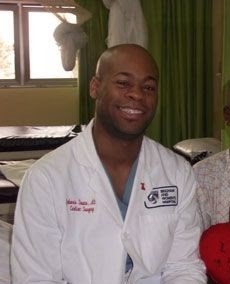
Many surgeons do not understand or can relate to the concept of burnout until it is upon them. More often than not, by then burnout is already in its advanced stages, often when irrefutable consequences have already encroached upon our lives.
For cardiothoracic surgery, our craft commands a certain level of risk, stress, dedication, and discipline that often exceed those of most other specialties. Therefore, we remain a particularly vulnerable population.
The first important step to mitigating burnout, particularly as a trainee, is to be aware that burnout is a real phenomenon that can happen to anyone.
In full disclosure, I will be the first to admit that at the start of my training, I viewed all of these practices as nonsensical and did not have any concept of how dysfunctional and debilitating one can become as a result of burnout. However, once I was deep in the trenches of my training, I learned very quickly the imperativeness of learning to be thoughtful about this subject.
We have to work towards avoiding unnecessary stressors, developing healthy coping strategies, and creating sustainable solutions. For me, exercise, yoga, or outdoor activities provide that sense of balance. I have also been purposeful about developing my spirituality through meditation and mastering a variety of breathing exercises. These are just a few, simple and effective strategies that I have found along the way—which I now deliberately infuse into my daily regimen.
Finally, family and friends are crucial to helping remind me of who I am, and where I came from—sometimes too good of a job! I am thankful for every moment they provide me with these reminders, especially when I feel burdened by the acuity of my work. I have now learned to lean on the strength of my cheerleaders and primary supporters (which for me has been my family as well as mentors), which reminds me of my potential and helps me re-center my focus so that I do not falter into the low spaces that burnout can take you.
Therefore, as pre-trainees, trainees and even attendings, I urge you to be intentional and to identify the strategies that help you avert burnout. This must be an active, daily process, and it certainly does not have to be alone. Commit with your co-residents to go out to dinner once a week, spend time with family, insist on a regular workout regimen, be intentional about a healthy diet, hoard sleep when you can, and most of all, remember that although only a special kind of individual can embark upon this journey of cardiothoracic surgery and be successful, we are all still human and within that fact comes the requisite compromise of self-care and preservation. Make these a priority!
JaBaris D. Swain, MD, MPH
Advanced Fellow, Cardiopulmonary Transplantation &
Mechanical Circulatory Support
Division of Cardiovascular Surgery
Hospital of the University of Pennsylvania
Colleen Pietras (@cmpmd)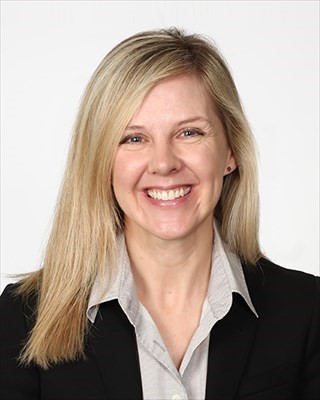
The degree to which each of us experiences mental and/or emotional fatigue in training varies. Burn-out may not even be recognized as such until training comes to an end, only to reinvent itself in practice.
As a surgical resident, it is easy to become overwhelmed, especially in the first few years of training. Developing healthy habits in both work and non-work related activities is essential. There are the more obvious factors, including naps, a well-balanced diet, adequate hydration, and physical exercise but many of these are quickly lost on certain rotations.
Then there are the not so obvious factors. These include nurturing relationships, maintaining hobbies or skills outside of surgery, and being open to new ways to accomplish a once familiar task.
There are also significant changes that must take place in one’s learning paradigm. You have to learn to grow from your mistakes while not losing your sense of humor and composure. Memorization, excessive note taking, and hours of focused reading time are replaced by conceptual learning and technical practice. Adjusting to this change is harder for some than others, especially with added fatigue.
Overall, prevention of burn-out involves awareness and attention. I recommend finding ways of circling back to why you entered the field in the first place. Identify your own unique contributions to the specialty, and do not compare yourself with others. It is important to learn how to take criticism and to identify with what is constructive. But it is often self-awareness of what you have accomplished to get to this point that is the best source of satisfaction to keep yourself going.
Colleen M. Pietras MD
Assistant Professor of Cardiac Surgery
Yale School of Medicine
Tom C. Nguyen, MD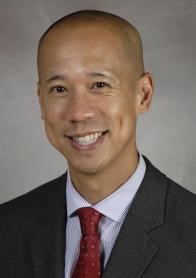
I recommend all trainees and active surgeons read a short essay by Seneca (“Brevity of Life”) written in 49AD. It’s a manifesto on how to get back control of your life. Many of us believe that life is short, and in many ways, it is, but we make it shorter by the daily/hourly decisions and choices we make. Seneca argues that life isn’t really that short, but we make it so by our decisions.
Tom C. Nguyen, MD
Chief of Cardiac Surgery
Associate Professor Cardiothoracic Surgery
McGovern Medical School at UTHealth
Memorial Hermann Heart and Vascular Institute
Curt Tribble, MD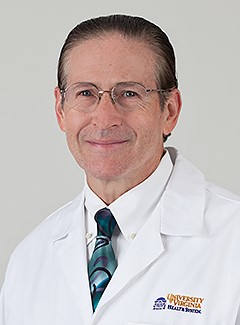
I like to think of this subject as, ‘energy management.’ Specifically, I think of it in three buckets: 1) things you can do to care for yourself, 2) to care for your patients, and 3) to care for your team members.
For yourself1:
– Eat well. Avoid junk food. Stock up on apples and your favorite nuts (almonds, peanuts, etc.) and keep them handy throughout your day. Drink water rather than soft drinks.
– Keep an exercise log. Record everything you do, including walking the stairs. A log of this sort can serve both as a source of pride and as an impetus to do just a little more when you can.
– Always choose your routes around the hospital to see something or someone pleasant, even if those routes take a bit longer.
For your patients2:
– Sit down when you talk to them
– Offer to rearrange their bed covers or to get them something to drink (when appropriate)
– Ask them what they want to do when they are well again
For your team3:
– Try to know something interesting about each of them and ask them about that issue on occasion
– Make a habit of delivering teaching points during rounds or in the OR
– Always, always choose to use the language of commitment while avoiding the language of complaint
Reference
Tribble, Curtis G. “Always Keep Your Clothes in the Car.” The Heart Surgery Forum, vol. 19, no. 5, 2016, p. 237., doi:10.1532/hsf.1679.
Tribble, Curt G. “Gimme 3 Steps (With a Nod to an American Rock Song from the 1970s).” The Heart Surgery Forum, vol. 19, no. 2, 2016, p. 080., doi:10.1532/hsf.1565.
Tribble, Curt, and Walter H. Merrill. “The Way We Talk Is the Way We Teach.” The Journal of Thoracic and Cardiovascular Surgery, vol. 147, no. 4, 2014, pp. 1155–1159., doi:10.1016/j.jtcvs.2013.12.025.
Curt Tribble, MD
Professor of Cardiothoracic Surgery
University of Virginia
November 2019
How should trainees prepare for each case to perform well and also to get as much as we can out of it?
Elizabeth Stephens (@EHStephensCHD)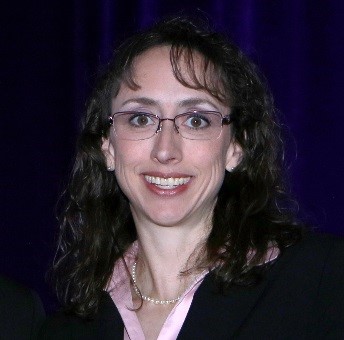
I found that I learned best by writing and drawing. This started out as writing down steps and surgeon’s preferences, then became more elaborate with diagrams showing needle angles and set-ups for anastomoses, etc. By the time I was on the surgeon’s side, the night before I would write down the whole operation, including details such as needle angles and drawing how things should be set up. Also, before each case I would write down what I wanted to improve upon. After each case I would ask the attending about things that I could improve on, and then I also wrote down notes for myself on things that I wish I had done better.
Clearly, not all people learn by writing, but being intentional about your training and trying to progress through and as a result of each case is key. Practicing with suture and any fake tissue material is also very helpful. Early on, it can be simply getting used to handling Castros and following the curve of the needle. Later, creating a “hole” simulating the chest cavity and practicing needle angles for AVR or MVR can be very helpful. And I can tell you from personal experience, attendings will notice and comment when you’ve been practicing.
Elizabeth H. Stephens, MD, PhD is a congenital heart surgeon and Assistant Professor at the Mayo Clinic.
Colleen Pietras (@cmpmd)
- Have a conversation with the attending about the pathology and plan for surgery (ideally on a day prior to the case). Make a point of approaching your attending for this discussion before you scrub. Showing your investment in the care of the patient may change the dynamics and opportunities for learning. Have a plan with the attending about what you will do in each case.
- Follow the patient even after their operation, even if they are not assigned to your service. Continuity of care is beneficial to learning and will not go unnoticed.
- Know each attending’s preferences and be open to learning more than one way to do everything. You can learn something from everyone, no matter what kind of surgeon they are.
- You can learn from observation if you do it actively. It is better to observe than to do nothing. If you aren’t scrubbed, take notes.
- Debriefing and understanding what went well and could have gone better is an essential component of learning. This is a constructive process. After each case, take notes down to the smallest detail. This will help build your own preference list in the future.
- Be open to constructive criticism and do not argue!
- Enjoy the process. Training, albeit long and arduous, goes by quickly. This is an incredible career and not anyone can both do it and succeed. Having a solid foundation is key.
Colleen M. Pietras MD
Assistant Professor of Cardiac Surgery
Yale School of Medicine
Tom C Nguyen (@tomcnguyen)
BEFORE: Read up on the technical steps. Talk to other residents on surgeon preferences and nuances. Know your patient forwards and backward (i.e. look at cath, echo, and labs). Talk to the patient and introduce yourself. Anticipate pitfalls (e.g. AI patient and cardioprotection strategy, cannulation for a Type A). Approach your attending and summarize the patient, what you want to do, and any potential nuances.
DURING: Try to own it. Approach it like a chess match, i.e. anticipate the next steps and have contingency plans. Have room awareness and control (e.g. you might be staring into a chest cavity but be aware of all the sights and sounds that are happening in the room. Use your CN VIII and listen to your surrounding environment (e.g. beep, beep, beep). Always keep moving (e.g. you ask for a chest tube and it’s not in the room, don’t stare at the ceiling, find something else to do). A fast operation is about steady motion.
AFTER: Be honest and reflect on what you did well and what needs to be improved. Practice, practice, practice… but focus your practice on your weaknesses. Keep a journal of what you did well and what needs to be improved. Write down nuances during the case (e.g. surgeon likes to use green towel next to retractor). Write down how long it took you to take down IMA. You’ll see progress. You’re one step closer to being a cardiothoracic surgeon.
Tom C. Nguyen, MD
Chief of Cardiac Surgery
Associate Professor Cardiothoracic Surgery
McGovern Medical School at UTHealth
Memorial Hermann Heart and Vascular Institute
Ara Vaporciyan (@AraVaporciyan)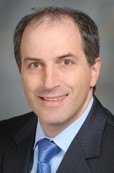
Always have a clear goal with the faculty on just what you want to work on during the case. Simply wanting to “do the case” is not a way to learn. Like training in any other skill, we focus on one element or component of the skill when practicing. Music, sports, art always break down the activity into components and focus on them. The same is true for surgery. Take the time to speak with the faculty, tell them where you are still struggling and where you would like to focus your work for that day.
Remember, you are slowly building a mental model of the conduct of a case, dealing with unexpected findings and anatomical relationships. Your model’s veracity improves through constant challenge. A good teacher asks questions that challenge your model. A good learner then modifies their model and keeps testing it. When that level of teaching is absent it is up to you to ask the questions. If your model didn’t give you the right answer find out why, don’t just memorize the correct answer.
Ara Vaporciyan, MD is a general thoracic surgeon and the Chair of the Department of Thoracic and Cardiovascular Surgery at MD Anderson with an academic focus on education, specifically on assessment and curriculum design.
October 2019
Sometimes the Easiest Thing to Forget During Surgical Training is to Have Fun
Jason J. Han, MD
I still remember the first time I performed a sternotomy or cannulated the aorta. I was overwhelmed with the concern that my novice hands may severely harm someone else for the first time. There was more anxiety than excitement in the room. I could hardly steady my hands from the adrenaline coursing through my veins.
Even after I had gotten through it successfully a few times, it was hard to ease up for a while. I thought to myself, I may have gotten away with it this time, but there would be no guarantees for the future. All I could think about on my way home that evening was how I needed to become better in so many ways.
Even as I continue to make progress, I still remain gripped by these same concerns and highly critical of anything I perform.
That maneuver could have been smoother. That repair stitch could have been avoided had I been more precise.
Rare are the days where I feel truly content with my performance.
As surgical trainees, we all share perfectionistic tendencies. Cardiac surgery is a demanding craft, and even our momentary lapses can have irreversible consequences for our patients. But then I recently experienced something that reminded me of what I may have forgotten in my quest to become a competent surgeon.
I was doing a difficult portion of the case and becoming frustrated with myself. I made errors. I sighed and I grunted. Then out of the blue, the attending surgeon made a joke and we all laughed. Instantly, the tension dissipated– from the room, from my posture, from my needle tip. I joined in the light-hearted conversation and took my mind off of constantly scrutinizing myself. Then I allowed myself to just enjoy being in the operating room for the first time in a while. Interestingly, I finished the second half of that anastomosis with much more fluency and confidence than I had ever done before. I also enjoyed the procedure immensely more than I had previously done.
Sometimes the easiest thing to forget during an operation as a trainee is to remember to have fun.
We all signed up for this career path for many different reasons. But some of the most influential factors have been the good times we have all had in the operating room, working into the wee hours of the morning, laughing and enjoying the feeling of working with our hands.
Throughout the course of our training and the rest of our careers, we will inevitably encounter circumstances that humble us. We will undoubtedly have moments where we will feel far from perfect. However, no matter the demands of the craft, we all need to remind ourselves from time to time to have fun. At the end of the day, that’s how we do some of our very best work.
Jason J. Han, MD is a PGY-3 integrated resident at the Hospital of the University of Pennsylvania.
Establishing an academic niche in cardiothoracic surgery: The earlier the better
